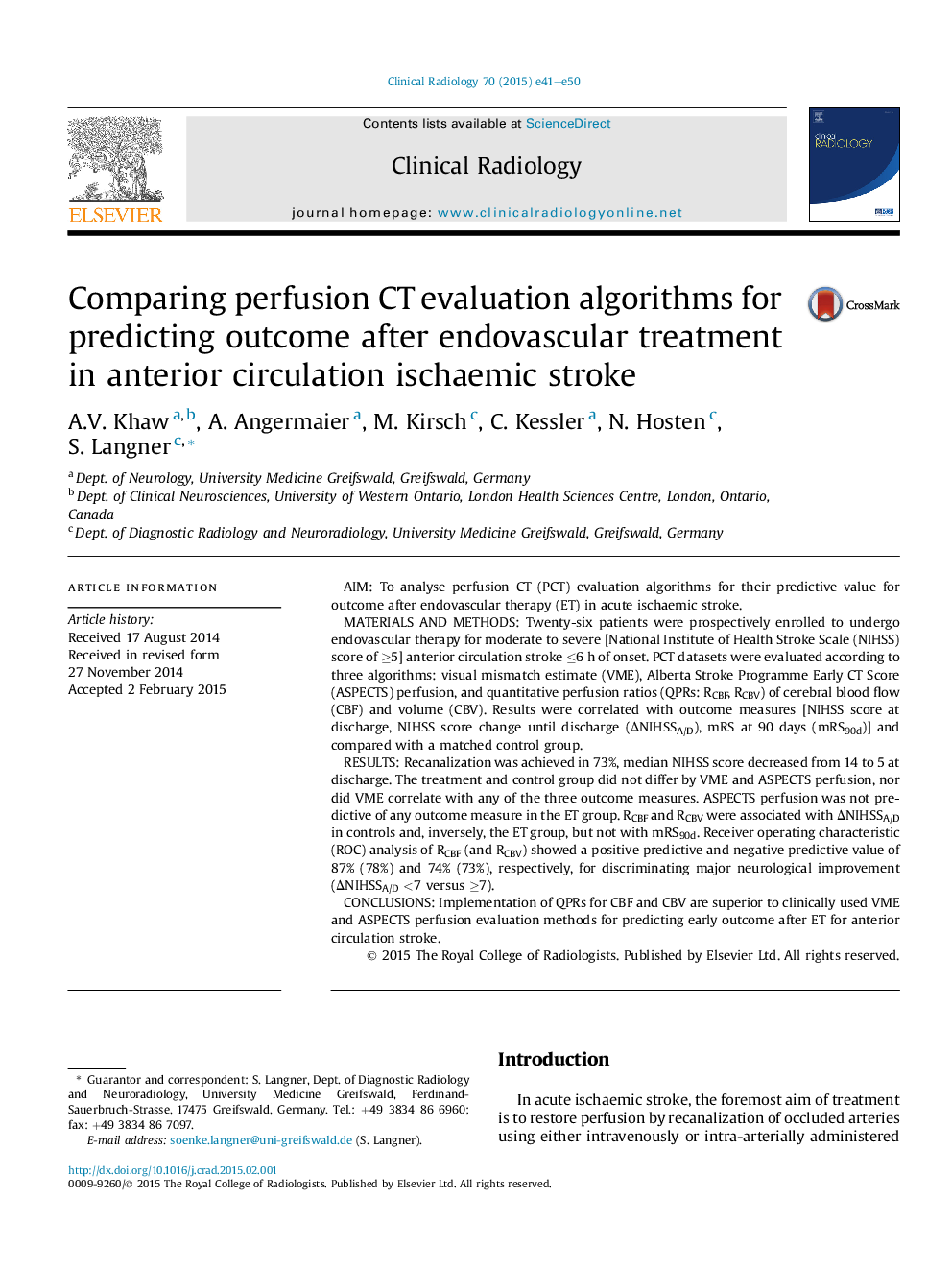| کد مقاله | کد نشریه | سال انتشار | مقاله انگلیسی | نسخه تمام متن |
|---|---|---|---|---|
| 6190962 | 1257694 | 2015 | 10 صفحه PDF | دانلود رایگان |

- Quantitative Perfusion ratios (qPR) can be derived from Perfusion CT data sets.
- qPR have a high predictive value for discriminating major neurological improvement.
- qPR are superior compared to ASPECTS perfusion for predicting early outcome.
AimTo analyse perfusion CT (PCT) evaluation algorithms for their predictive value for outcome after endovascular therapy (ET) in acute ischaemic stroke.Materials and methodsTwenty-six patients were prospectively enrolled to undergo endovascular therapy for moderate to severe [National Institute of Health Stroke Scale (NIHSS) score of â¥5] anterior circulation stroke â¤6 h of onset. PCT datasets were evaluated according to three algorithms: visual mismatch estimate (VME), Alberta Stroke Programme Early CT Score (ASPECTS) perfusion, and quantitative perfusion ratios (QPRs: RCBF, RCBV) of cerebral blood flow (CBF) and volume (CBV). Results were correlated with outcome measures [NIHSS score at discharge, NIHSS score change until discharge (ÎNIHSSA/D), mRS at 90 days (mRS90d)] and compared with a matched control group.ResultsRecanalization was achieved in 73%, median NIHSS score decreased from 14 to 5 at discharge. The treatment and control group did not differ by VME and ASPECTS perfusion, nor did VME correlate with any of the three outcome measures. ASPECTS perfusion was not predictive of any outcome measure in the ET group. RCBF and RCBV were associated with ÎNIHSSA/D in controls and, inversely, the ET group, but not with mRS90d. Receiver operating characteristic (ROC) analysis of RCBF (and RCBV) showed a positive predictive and negative predictive value of 87% (78%) and 74% (73%), respectively, for discriminating major neurological improvement (ÎNIHSSA/D <7 versus â¥7).ConclusionsImplementation of QPRs for CBF and CBV are superior to clinically used VME and ASPECTS perfusion evaluation methods for predicting early outcome after ET for anterior circulation stroke.
Journal: Clinical Radiology - Volume 70, Issue 5, May 2015, Pages e41-e50